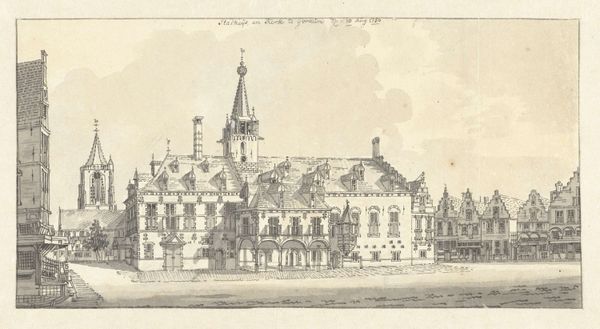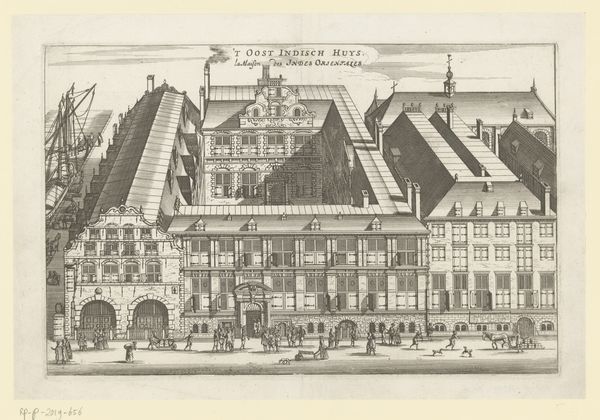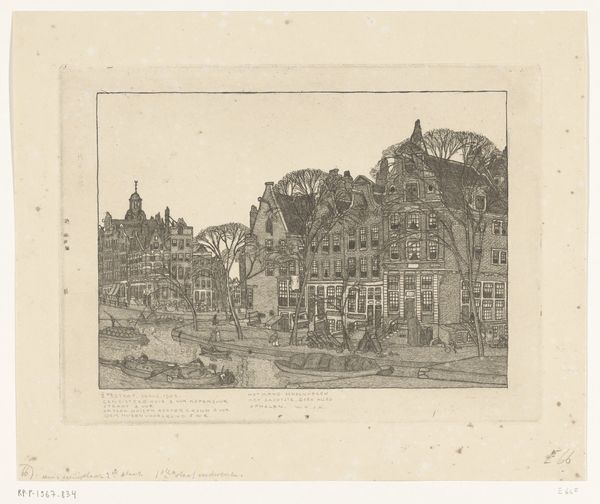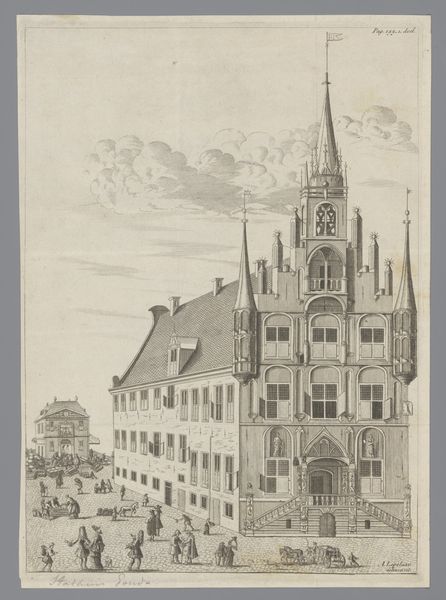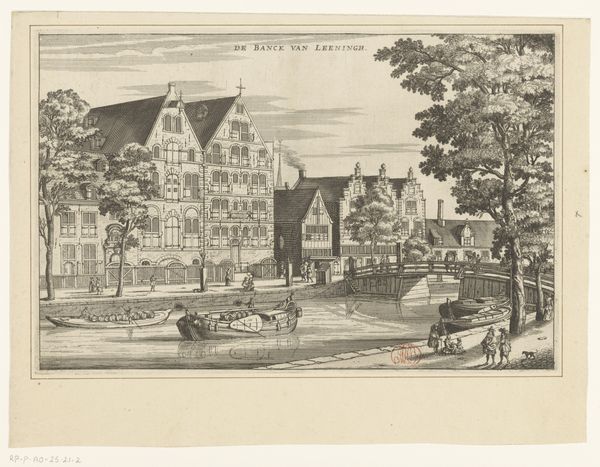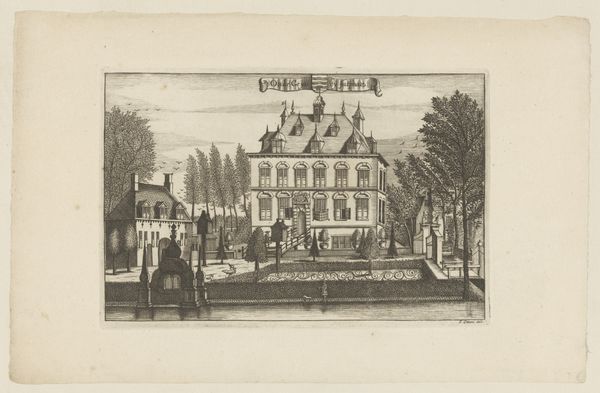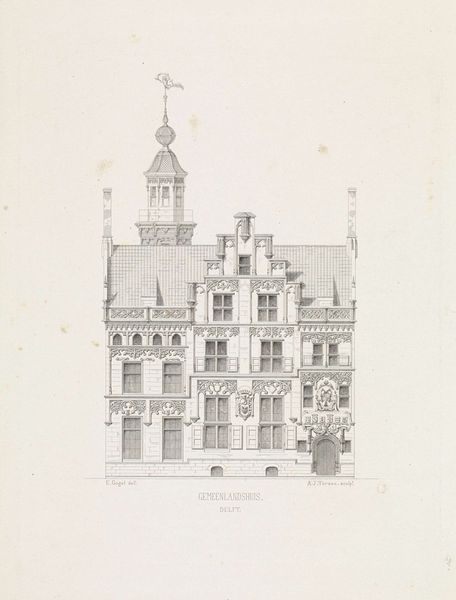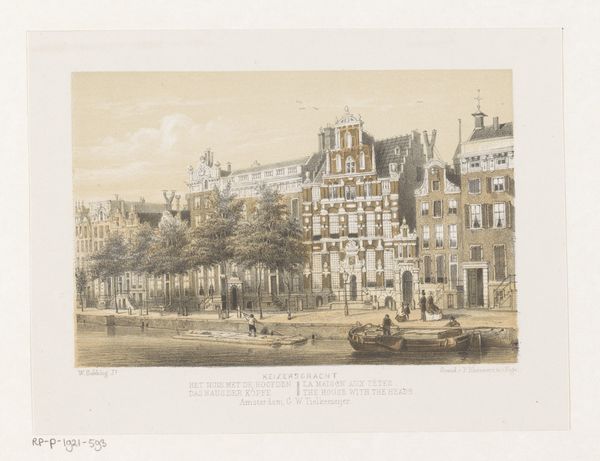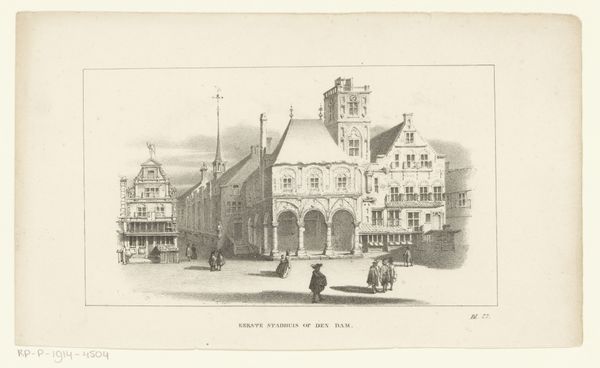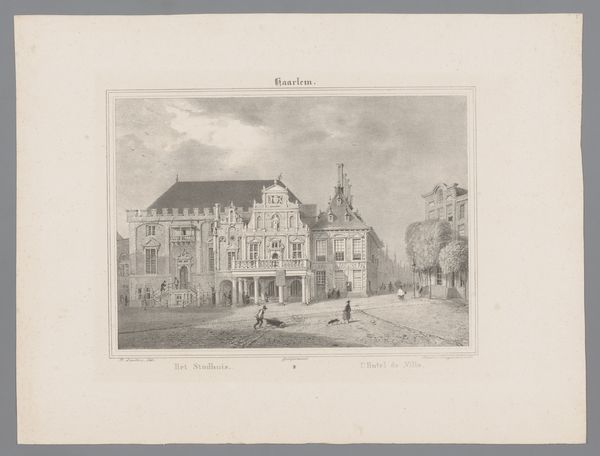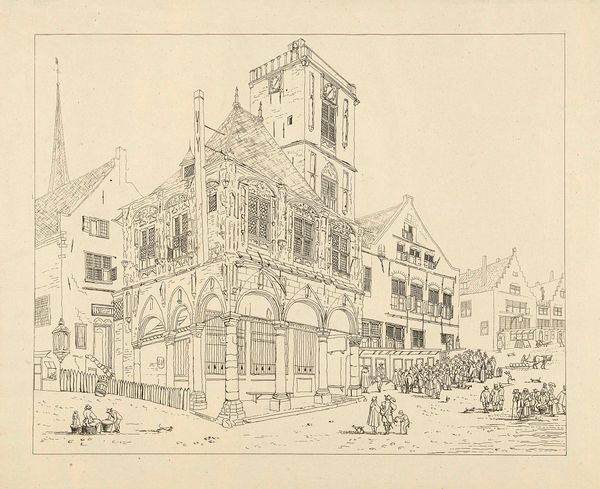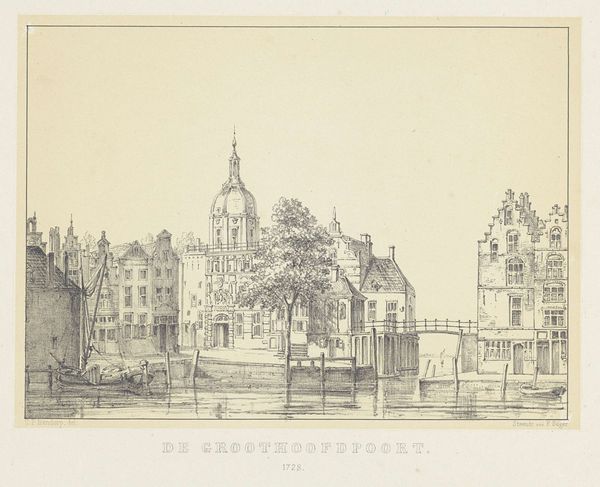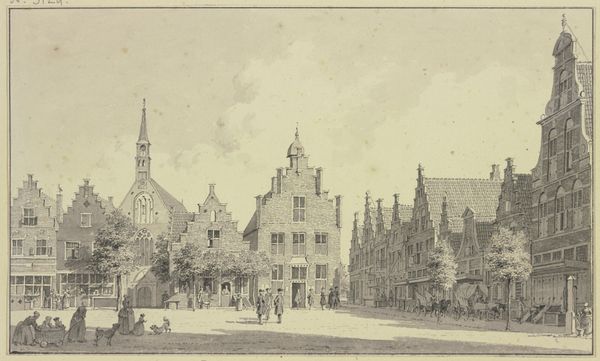
drawing, paper, ink
#
drawing
#
baroque
#
dutch-golden-age
#
landscape
#
paper
#
ink
#
cityscape
Dimensions: height 156 mm, width 207 mm
Copyright: Rijks Museum: Open Domain
Editor: This ink drawing on paper, "Het stadhuis te Goch," possibly from 1744-1745 by Jan de Beijer, offers a glimpse into Dutch Golden Age architecture. I’m struck by how much detail is captured just with ink; the building looks almost three-dimensional. What do you see when you look at it? Curator: I’m drawn to the way the labor is evidenced through De Beijer’s hand. Note the texture he creates with the cross-hatching to render the shadows. It tells us about the physical act of drawing and the time involved. What kind of social transactions, for example, are inferred from the detailed recording of municipal space? Editor: That's interesting. So you mean that by meticulously illustrating this town hall, he's also documenting a moment of civic engagement and possibly, economic activity within this space? Curator: Exactly! We can even analyze the materiality of the drawing itself. Paper was becoming increasingly available, and ink readily produced, leading to a growth in images circulating documenting such scenes. Also, observe how the act of architectural documentation starts to become systematized into something approximating cartography: each stroke is about making data physical, making information shareable, consumable. What do you think about the ways of circulation? Editor: That's really insightful. I hadn’t considered the material accessibility enabling such widespread creation of cityscapes. Thinking about the Baroque style of the architecture combined with the availability of these relatively accessible art supplies like ink and paper offers a new way to interpret images of this period. Thank you. Curator: Indeed, by focusing on the process and materials, we gain a deeper understanding of art’s relationship to its cultural context, highlighting both production and reception.
Comments
No comments
Be the first to comment and join the conversation on the ultimate creative platform.
